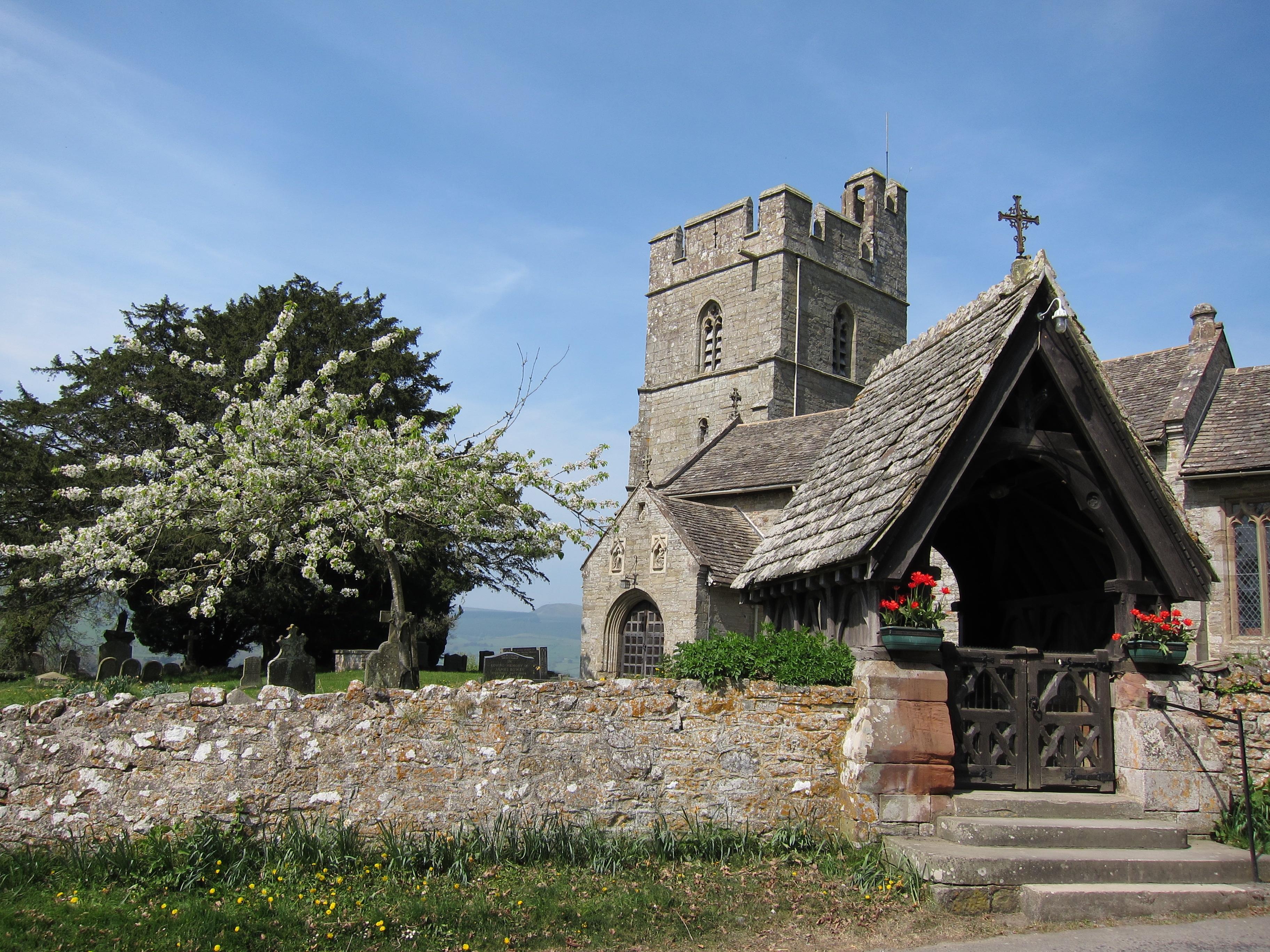St Mary
Gladestry, Powys
Ancient church and quiet garden on the Offa's Dyke Path in the Welsh border.

Burned during the Glyndwr risings in 1401, St Stephen's is a church with a history to rival any castle, , with a rare surviving medieval rood screen and possibly the oldest organ in the UK.
Old Radnor, Powys
Founded in the 15th century, on a 6th century site as an important collegiate church, near to the castle of the Welsh princedom of Powys.
It is entered through the south porch, which has niches now occupied by handsome Victorian statues. Just inside the door is a primitive looking font, a circular block of stone with its top hollowed out to form a shallow bowl. It stands on four squat feet and may date back to the 8th century.
The lovely wooden screen, stretching across the width of the church, is 15th century, and is one of the best in Wales. Also of wood, and also lovely, is the organ case, a remarkable survivor from about 1500 and the earliest of its kind in Britain. The organ inside is Victorian, but was engineered so as not to damage or interfere with the remarkable case.
There are medieval floor tiles in several parts of the church, which also has its original roofs. In the north chapel there is a medieval vestments chest and 15th century stained glass, including a figure of St Catherine.
Prominent in the churchyard is a huge block of rough hewn stone that is the tombstone for the grave of Sir Herbert Lewis, 4th Baronet of Harpton Court. It may be a reused prehistoric megalith. There are other memorials to members of the Lewis family in the church; the most interesting is to Thomas Lewis, who 'enjoyed a life full of years which on the 5th April 1777 he exchanged for the immortality of Heaven, aged 86 years and 5 months'.
Across the lane from the church is a raised earth platform with a ditch around it that some have suggested was where the castle stood. There is a stone slab incised with a cross in the nave floor of the church, said to be the tombstone of Hugh Mortimer, Rector of Old Radnor in the 13th century.
To the north, the church looks over the open hills of Radnor Forest, so called because it was a medieval hunting ground, an enclosed area that would have been the preserve of the monarch and important barons. Immediately to the south are large modern quarries, hidden by the lie of the land and by trees.
Gladestry, Powys
Ancient church and quiet garden on the Offa's Dyke Path in the Welsh border.
Huntington, Herefordshire
St Thomas a Becket church is reputed to have been erected in the early 13th century as part of the penance of one of the murderers of Becket in 1170 and possibly stands on the site of an earlier Saxon church.
Colva, Powys
Colva's church stand more or less alone, peeping south through its bower of yew trees high up in the Radnorshire hills.